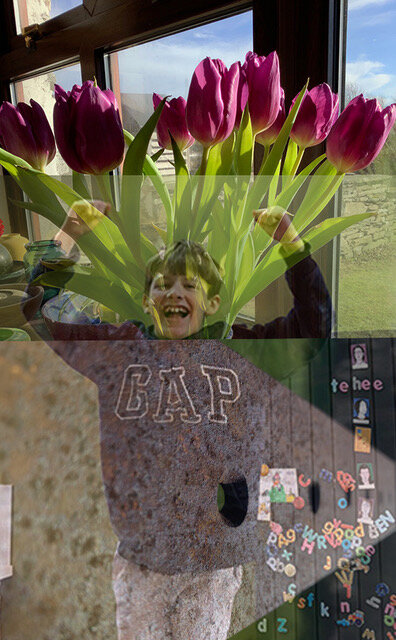In our latest blog, Learning & Engagement Programme Manager Carol Dunbar reflects on a recent online session she attended on Dementia and Imagination.
I recently attended a very insightful training session, Dementia and Imagination, designed to inspire and encourage more creative activity and interaction with people living with dementia, their families and carers. Led by two young artists, Claire Ford, Artist and Workshop Facilitator and Kate Parkin, Creative Age Programme Manager, Equal Arts, it was packed with useful resources and practical examples.
The attendees, some 20 of us, spread across the UK, were from a range of experiences – some in roles similar to mine, in galleries and museums, other actively involved as freelancers and artists working in care homes and hospital settings and yes using biscuits and teabags as art materials!
I wanted to attend, as this is an area of engagement that the Pier Arts Centre is keen to develop in partnership with local agencies and support groups and how we can make the gallery experience dementia friendly and an attractive place to visit.
We are all aware of the impact of dementia on family and friends in our community. In 2020, we were about to launch a project, funded by The Life Changes Trust, which would have seen artist Emma Ainsley and musician John Phillips spend a month’s residency in Orkney in May, co-creating with those living with dementia. It was, and will be, an ambitious project, that when restrictions ease, we look forward to delivering. Meantime we know how difficult and often heart-breaking it is, in current circumstances, to have a rounded and meaningful engagement with our older relatives.
Our session focussed on working ‘in the moment’, encouraging the use of imagination rather than relying on memory and reminiscing. We learnt a lot about how to utilise all our five senses – and how the loss of these affects individuals as their dementia progresses. We learnt about how confusing and challenging the world increasingly becomes with each stage of dementia and how we can take account of and respond to these changing circumstances.
To round off our session we took part in a simple activity, an open ended questioning session exploring a work of art and recording all our immediate responses. We just had five minutes, but this is a model that has been very successful in many settings across the world.
My group looked at a sculpture from the Pier Arts Centre collection.
F. E. McWilliam (1909–1992) The Orator, 1955 © FE McWilliam Estate from the Pier Arts Centre Collection
Here is our story/response.
The Orator by FE McWilliams
I see a figure, (a figure)
Strong
A person, strong man!
Solid, (so solid)
Champion of champions! A hero!
He’s built up in pieces, so many pieces
I imagine he’s quite warm to touch
Angular, rough, dry, (dry)
Well held
I’d like to hold him
Feel the textures, (he’s very textural)
What if he’s a she?
There’s a sound of fear – no surely a cheer
Or a cry!
He/She is quiet, they haven’t got a mouth (a mouth)
I hear the sound of where he was made (or she!)
Clang! Clang! Beat! Beat!
Reaching and straining to the sky (the sky)
When we had completed our story we were asked to send an image of something immediately around us that the artwork had inspired, these were collated by Claire into a photo montage as a further reflection on our collective response. (see image at the top)
This was a really fascinating and insightful session, which has encouraged me to develop a few resources around our collection that can be offered out to the families and carers of those living with dementia to share over a cup of tea and a custard cream even.
The session was organised by Engage, with support from ACE and in Wales and Scotland by the Paul Hamlyn Foundation.


